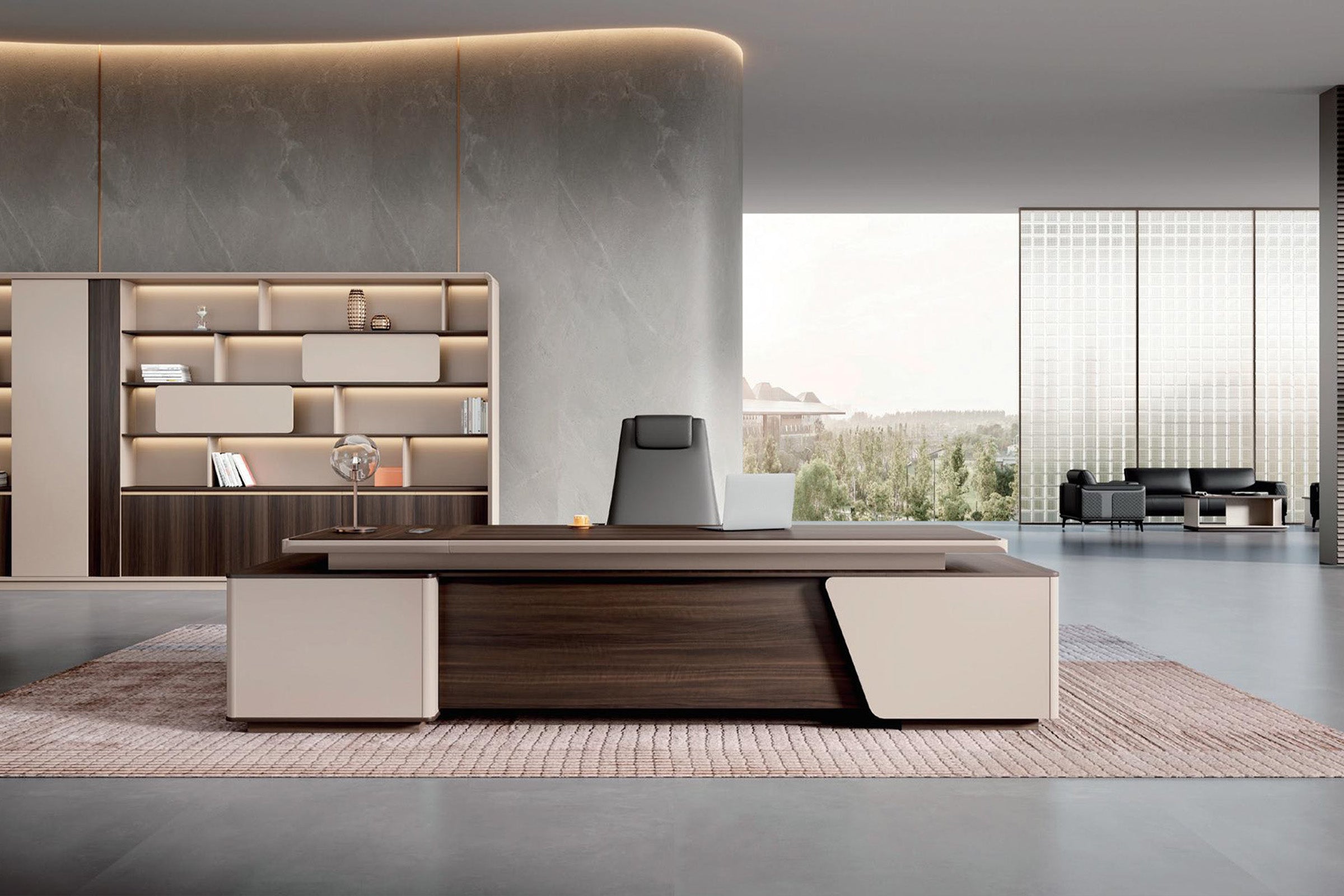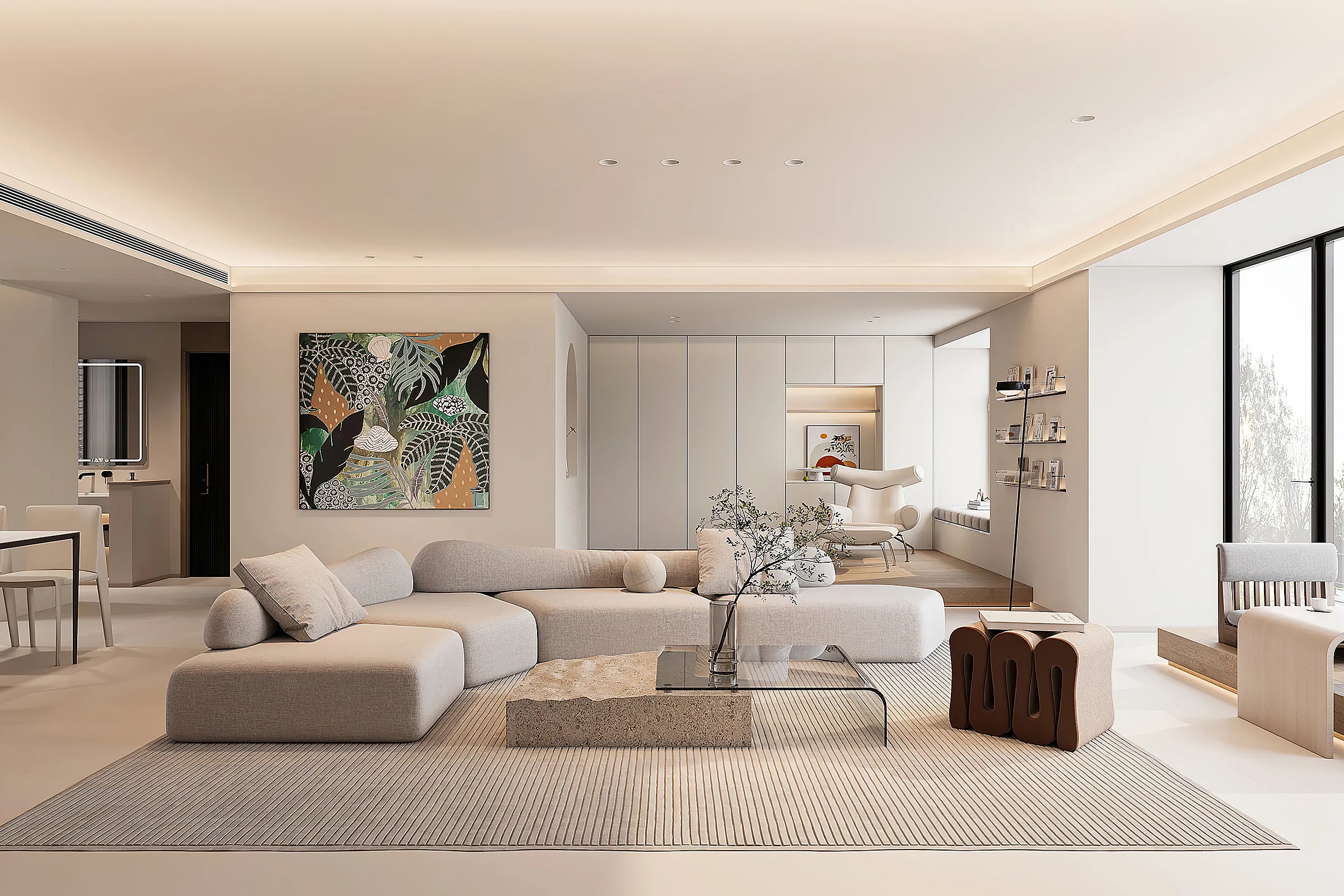|
Content Menu ● Types of Office Desks ● Writing Desks ● Credenza Desks ● Executive Desks ● Standing Desks ● U-Shaped and L-Shaped Desks ● Computer Desks ● Reception Desks ● Materials Used in Office Desks ● Ergonomics and Health Benefits ● Modern Office Desk Design Trends for 2025 ● How to Choose the Right Office Desk ● Space Efficiency ● Storage Needs ● Material and Durability ● Ergonomics ● Budget ● Style and Aesthetics ● Organizing Your Desk for Maximum Efficiency ● Visual and Video Inspirations ● Images of Office Desks ● Video Resources ● Frequently Asked Questions (FAQs) Types of Office DesksOffice desks come in many shapes and styles, each designed to meet specific functional and aesthetic needs. Writing DesksWriting desks are simple, flat-surfaced desks primarily designed for handwriting and paperwork. They often include a drawer for storing stationery and are ideal for students and corporate employees who focus on writing tasks. Their minimalist design makes them suitable for both home and office use. Credenza DesksCredenza desks are known for their ample storage, including drawers, cabinets, and shelves. They provide a sleek, low-profile workspace that is perfect for organizing documents and office supplies. These desks are often used as complementary pieces alongside larger desks or in smaller office spaces. Executive DesksExecutive desks offer a professional and spacious workspace with plenty of storage. They come in classic wood, glass, or metal finishes and are available in L-shaped or U-shaped configurations. These desks combine functionality with sophistication, making them a centerpiece in executive offices. Standing DesksStanding desks promote better posture and reduce sedentary time by allowing users to alternate between sitting and standing. They come in electric or manual height-adjustable models and can include storage options. Ergonomic benefits include improved circulation and reduced back pain. U-Shaped and L-Shaped DesksU-shaped desks provide a wraparound workspace that maximizes organization and accessibility. L-shaped desks fit neatly into corners, offering extended workspace and storage, ideal for multitasking and dual-monitor setups. Computer DesksDesigned specifically for computer use, these desks include compartments for monitors, keyboards, and cable management. They help keep electronic devices organized and accessible. Reception DesksReception desks serve as the first point of contact in an office. They are designed to be welcoming, with privacy features, ample surface space, and built-in storage for efficient organization. Materials Used in Office DesksThe choice of material affects the desk’s durability, appearance, and cost. Common materials include:
Ergonomics and Health BenefitsErgonomic office desks are designed to support good posture and reduce physical strain. Adjustable standing desks allow users to switch positions, promoting movement and reducing the risk of musculoskeletal disorders (MSDs). Features like adjustable height, curved edges, and ample legroom contribute to comfort and productivity. Ergonomic furniture reduces pain by supporting proper posture and spinal alignment, preventing arthritis and decreasing work-related injuries. Employees using ergonomic desks often report increased comfort and productivity, which benefits overall workplace wellness. Modern Office Desk Design Trends for 2025The latest trends in office desk design focus on flexibility, employee well-being, and technology integration:
In Houston and other metropolitan areas, office furniture trends in 2025 emphasize modular designs, hybrid work solutions, and sustainable materials. Adjustable desks, mobile workstations, and collaborative furniture support flexibility and comfort, transforming how workspaces function to increase employee satisfaction and motivation. How to Choose the Right Office DeskWhen selecting an office desk, consider the following factors: Space EfficiencyMeasure your workspace carefully to ensure the desk fits comfortably without overcrowding. Consider the office layout—whether it’s a small cubicle, an open floor plan, or a home office corner. Leave room for an office chair and other furniture like filing cabinets or printers. Storage NeedsChoose desks with drawers or shelves if you require organization for documents and supplies. For home offices, desks with ample storage help keep work materials out of sight, maintaining a tidy living space. Material and DurabilitySelect materials that match your aesthetic preferences and durability requirements. Solid wood offers longevity and classic appeal, while laminate and melamine provide affordable, low-maintenance options. ErgonomicsOpt for adjustable desks or those designed to support good posture. Standing desks or desks with adjustable height promote movement and reduce health risks associated with prolonged sitting. BudgetBalance features and quality within your budget. High-quality desks are available across a wide price range, from modest to elaborate designs. Style and AestheticsConsider your office’s decor style—traditional, modern, mid-century, or minimalist. Desks come in various finishes and colors, such as cherry wood, oak, black, white, or espresso brown, allowing you to match your workspace’s look. Organizing Your Desk for Maximum EfficiencyA well-organized desk enhances productivity and reduces stress. Here are some tips:
Visual and Video InspirationsImages of Office Desks


Video Resources
https://youtube.com/shorts/wfF_B2_fEFo
Frequently Asked Questions (FAQs)Q1: What is the best type of desk for a home office? Q2: Are standing desks worth the investment? Q3: What materials are most durable for office desks? Q4: How can I manage cables effectively on my desk? Q5: What are the latest trends in office desk design? |
- Choosing a selection results in a full page refresh.












